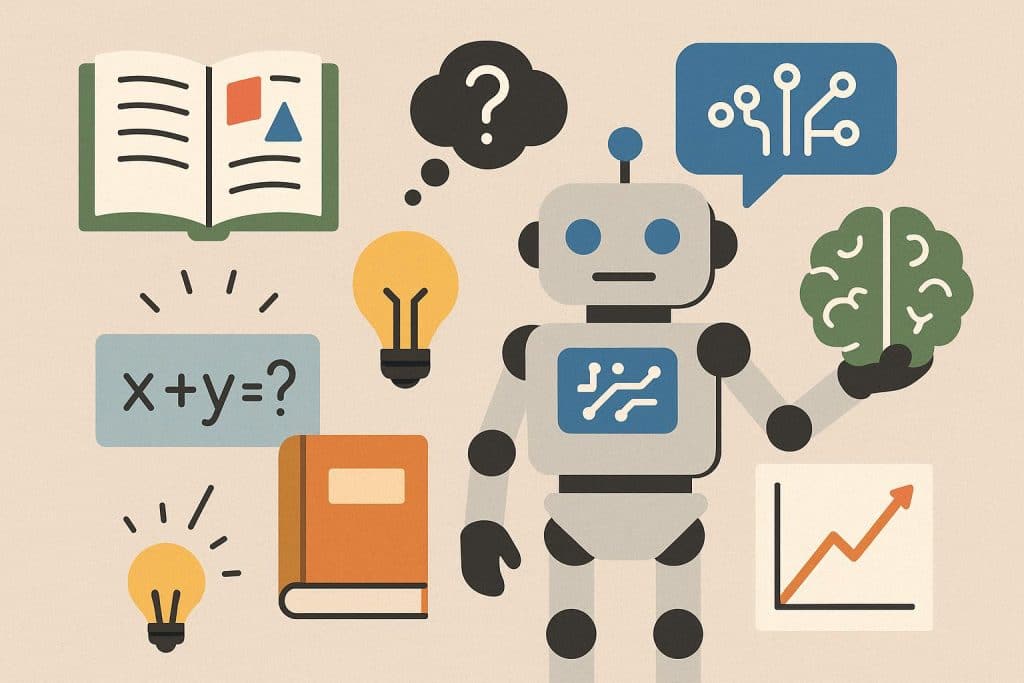For generations, students have wrestled with complex equations, dense texts, and endless assignments, often feeling that learning is more about survival than discovery. But education is now shifting dramatically, thanks to artificial intelligence. AI learning tools are no longer just answer generators — they are becoming mentors that explain, adapt, and empower. Among these, Question AI stands out as a leading example, helping students not only solve problems but also understand them deeply.
In this article, we’ll explore how AI-powered study platforms like Question AI are changing the way students learn — turning frustration into comprehension and memorization into mastery.
Rethinking the Learning Process
Traditional education has long emphasized correct answers. Exams, grades, and assignments often measure outcomes rather than understanding. Yet, true learning occurs when students grasp why a concept works — not just what the result is.
AI learning tools challenge this paradigm. Instead of simply providing solutions, platforms such as Question AI offer step-by-step reasoning, breaking down even the toughest math or science problems into digestible parts. Students can upload a question — whether typed or photographed — and receive an instant, structured explanation. This process mirrors how an attentive tutor might guide a learner through their thought process, one step at a time.
As a result, AI is not replacing teachers but enhancing how students engage with their learning journey.
From Answers to Understanding
- The Power of Step-by-Step Learning
One of the biggest frustrations in self-study is getting stuck without knowing where you went wrong. Question AI addresses this by providing not just the final answer, but the logic behind every step. For example, in algebra or geometry problems, the tool highlights each operation and explains its purpose. This transparency builds confidence and helps learners internalize problem-solving techniques they can apply elsewhere.
- Learning by Interaction
Modern AI study tools go beyond static explanations. Question AI features a chat-style interface that allows students to ask follow-up questions like “why was this formula used?” or “can you show another method?” This interactive process makes learning dynamic and responsive — much like a real classroom conversation. It encourages curiosity and deeper engagement, two key ingredients of meaningful education.
- Visual and Contextual Support
Many learners are visual thinkers, and Question AI supports them by recognizing uploaded images—photos of handwritten equations, screenshots, or diagrams—and explaining what those images show in simple, easy-to-follow language. Rather than generating new graphics, it interprets the visual input and translates it into clear step-by-step explanations, helping students understand the meaning and context behind the picture.
Building Global Access and Equity
AI education tools are also breaking down traditional barriers of access. Question AI, for example, supports multiple languages and works seamlessly across mobile and desktop devices. This inclusivity allows students from different backgrounds — whether in urban schools or rural areas — to benefit equally from AI-powered education.
Moreover, the daily free usage option ensures that essential learning support is not locked behind a paywall. This is particularly crucial in regions where private tutoring is either unaffordable or unavailable. By democratizing access to high-quality explanations, AI platforms are promoting educational equity at a global scale.
Balancing AI with Human Guidance
While AI tools like Question AI are remarkably capable, they are most powerful when paired with human insight. Teachers and tutors can use these platforms as teaching aids, allowing them to focus on higher-order skills such as critical thinking, creativity, and application.
For instance, a math teacher can assign students to use Question AI to practice problems, then use class time to discuss the reasoning behind solutions. This flipped learning model enhances engagement while lightening teachers’ workloads.
Crucially, responsible AI tools respect privacy and maintain transparency. Question AI, for instance, does not require unnecessary personal data collection — students can simply log in with an email or Google account. This emphasis on security and trust ensures that technology enhances learning without compromising integrity.
The Future of AI-Enhanced Learning
As AI continues to evolve, its role in education will extend beyond solving problems. Future AI tutors could assess emotional engagement, identify learning fatigue, and adapt tone or difficulty accordingly. We are moving toward a world where AI doesn’t just teach content — it teaches how to learn.
Platforms like Question AI are already leading this evolution, merging advanced models, rich databases, and a learner-centered philosophy. They’re proving that understanding can be scaled — not by reducing learning to automation, but by personalizing it.
Conclusion
Education has always been about the journey from confusion to clarity — from struggle to mastery. AI tools like Question AI are redefining this journey, turning solitary study into an interactive, empowering experience.
By combining precision, accessibility, and human-like guidance, these platforms help students grasp not only how to find the answer, but why it makes sense. As technology continues to evolve, the most important shift may not be in how fast we learn — but in how deeply we understand.
In short, the future of learning isn’t about replacing teachers or shortcuts to success. It’s about giving every learner the tools to think, question, and truly master their studies.
